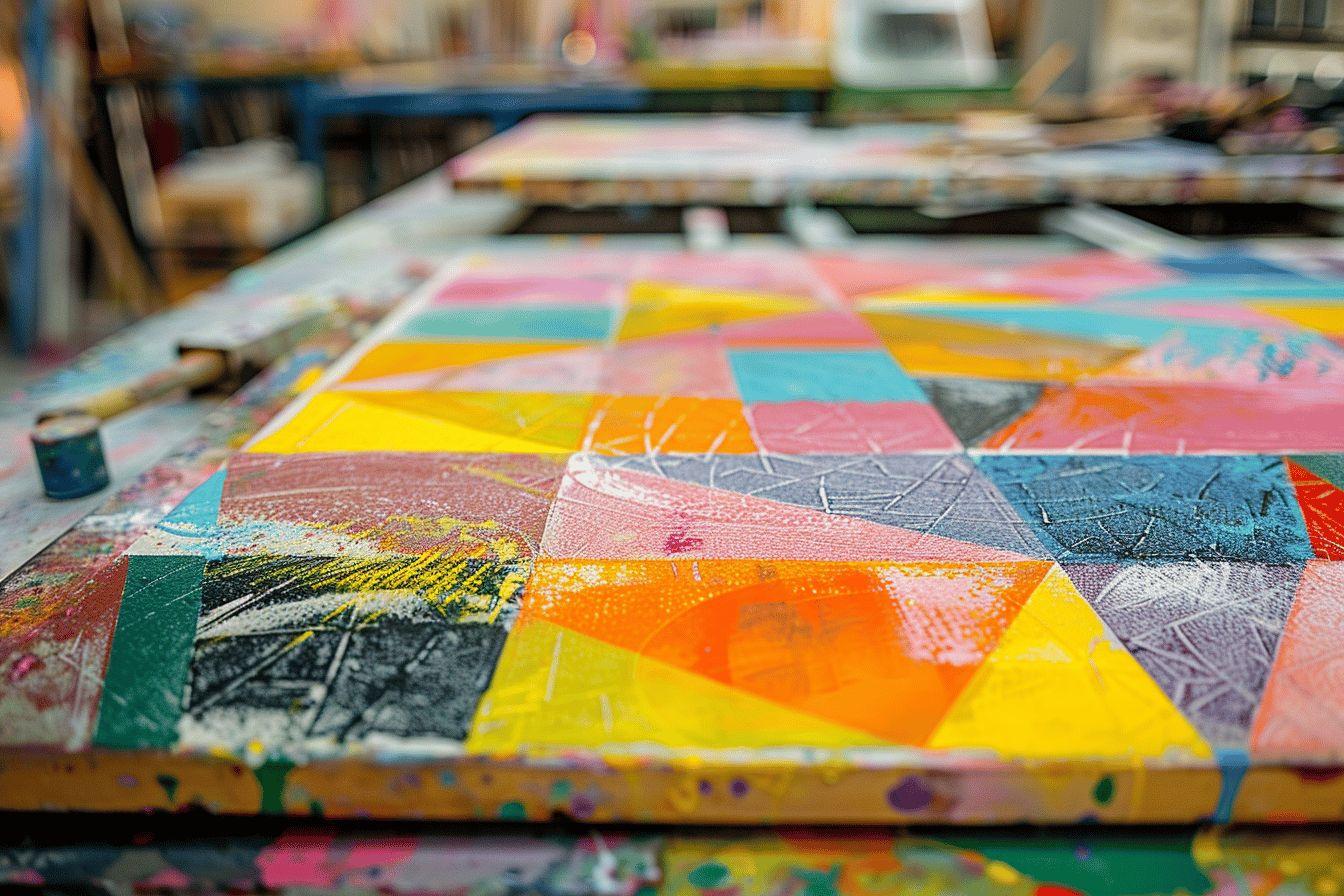The art of the sword swallower has fascinated for centuries, combining technical skill with striking visual spectacle. Henri Matisse, the famous French painter, took up this theme to create an emblematic work within his “Jazz” portfolio. This color lithograph, produced using the cut-paper technique, offers a unique and vibrant interpretation of this spectacular art form. Immerse yourself in the captivating world of Matisse’s “L’avaleur de sabres”, a piece that combines lithographic tradition and artistic innovation.
Matisse’s paper-cut technique
Henri Matisse, a leading figure of Fauvism, developed the cut-paper technique towards the end of his career. This innovative method enabled him to create dynamic, colorful compositions despite his health problems. For “L’avaleur de sabres”, Matisse used this approach to capture the essence of the circus act.
The technique involves cutting shapes from colored paper, then assembling them to form a composition. This method offers several advantages:
- great creative freedom
- The ability to easily readjust the composition
- A powerful, immediate visual effect
- Simplified shapes for greater emotional impact
In “L’avaleur de sabres”, Matisse captures the essence of the movement and danger inherent in this street art. The cut-out shapes, with their sharp contours and vivid colors, create a visual tension that perfectly reflects the intensity of the performance. This work continues the tradition of captivating tales of sensory experience, transposing the art of the circus into the visual realm.
From paper to lithography: the creative process
The transition from the original cut-paper work to color lithography is a complex process requiring expertise and precision. Produced in the Art-Lithographies workshops in Paris, this limited edition of “L’avaleur de sabres” bears witness to exceptional craftsmanship.
The lithography creation process comprises several crucial stages:
- Faithful reproduction of the original work on the lithographic stone
- Meticulous preparation of inks for each color
- Hand printing on an antique lithographic press
- Drying and quality control of each print run
This traditional printing technique preserves the vivid colors and precise forms characteristic of Matisse’s style. Each print is likewise a true work of art, testifying to the alliance between Matisse’s artistic vision and the technical excellence of the lithographers.

Characteristics and editions of the work
Matisse’s “L’avaleur de sabres” exists in several versions, each with its own particularities. Here’s an overview of the main features of this lithograph:
| Feature | Description |
|---|---|
| Dimensions | 58×79 cm or 39×59 cm depending on version |
| Paper | BFK Rives pure rag 300 gsm |
| Print run | Limited to 200 copies (2007) |
| Signature | In the plate by Matisse |
| Special features | Some editions without centerfold (rare) |
Each copy comes with a certificate of authenticity, guaranteeing its origin and value. The presence of the copyright of the Succession Matisse and the publisher on the back of each lithograph attests to the legitimacy of this edition, produced with the agreement of the artist’s heirs.
These features make “L’avaleur de sabres” a prized collector’s item, combining Matisse’s renown with the rarity of a limited edition. Collectors and art lovers can now discover the secrets of this delightful work, both artistically and technically.
Matisse’s artistic legacy
“L’avaleur de sabres” is part of the “Jazz” portfolio, a set of 20 lithographs representing the apogee of Matisse’s cut-paper technique. Produced between 1943 and 1947, this illustrated book bears witness to the artist’s inexhaustible creativity, even in his final years.
Matisse’s influence on modern and contemporary art is considerable. His technical innovations, notably paper cut-outs, paved the way for new forms of artistic expression. “L’avaleur de sabres”, with its bold composition and brilliant colors, is a perfect illustration of the aesthetic revolution initiated by Matisse.
The work has been the subject of numerous exhibitions and publications, confirming its status as an icon of modern art. It continues to inspire contemporary artists, who see it as a perfect example of art’s ability to capture the essence of a subject through the simplicity of form and the power of color.
Ultimately, Henri Matisse’s “Sword Swallower” is much more than a simple lithograph. It is a vibrant testimony to artistic innovation, combining the tradition of lithography with the modernity of cut paper. This captivating work continues to intrigue, offering viewers a window into Matisse’s creative genius and the spectacular art of the sword swallower.

